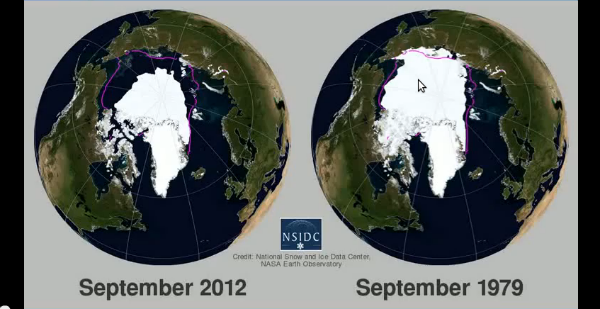NSDIC: Arctic & Antarctic Sea Ice Extent, 1979-2012 animated maps

In October 2012, National Snow and Ice Data Center (NSIDC) released an animated map of 2012 Arctic and Antarctic sea ice extent shown side-by-side with 1979 – 2009 climatology.
For more information and visualizations of thinning sea ice, see the NOAA Climate Watch article, “Arctic Sea Ice Getting Thinner, Younger.”
Source: NSDIC

antarctica’s “continental climate” will keep it insulated from the effects of global warming to a certain extent. However, ice is a simple substance that behaves very simply. The hotter it gets, the more it melts. And one can’t argue against the fact that the ice in the Arctic has been melting quite a bit lately. Eventually, Antarctica will lose a great quantity of its ice too.